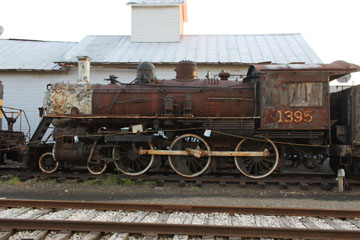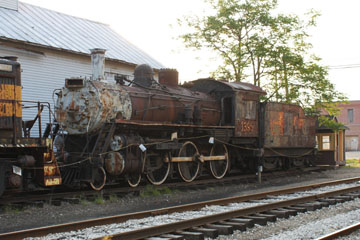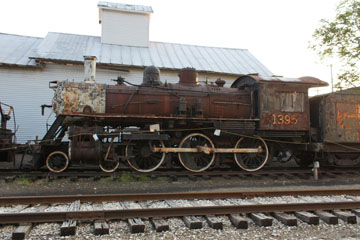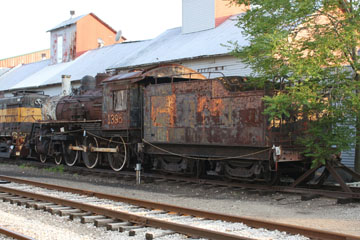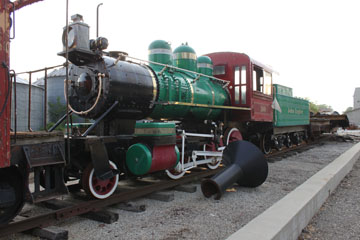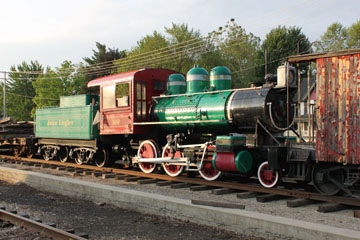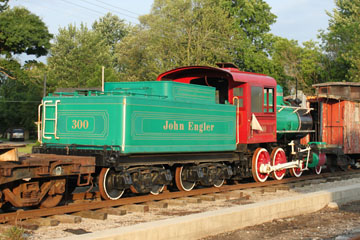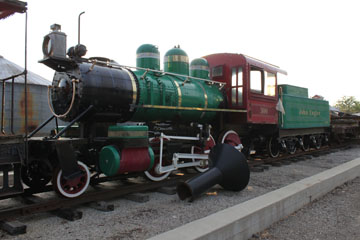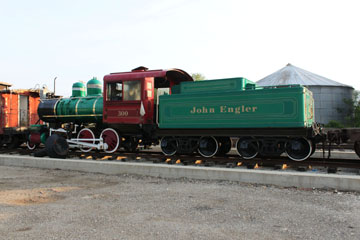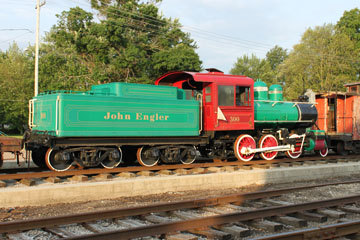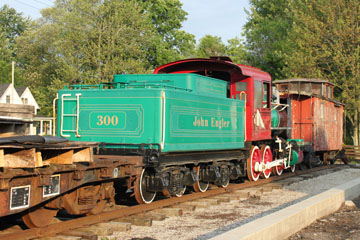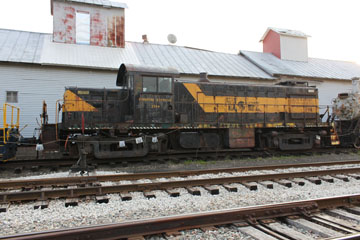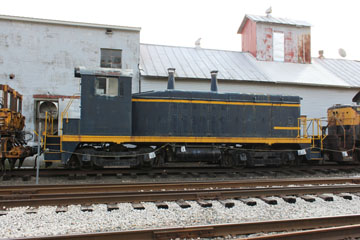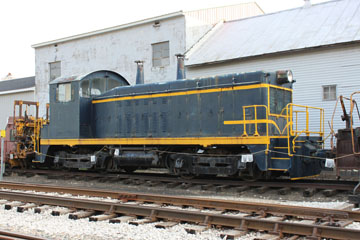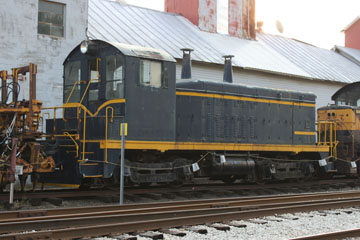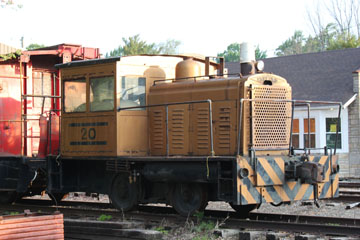

The Coopersville & Marne Railway is a volunteer-operated tourist railroad that provides passenger services on a seven mile stretch of track between Coopersville and Marne, MI, as well as some freight car services connecting with the Grand Rapids Eastern Railroad at the Saint Mary's Siding in Grand Rapids, MI.
Passenger excursions operate between 21st March and 20th December.
The line is part of what started as the Oakland & Ottawa Railroad, chartered in 1848 to build from Oakland through Fentonville to Lake Michigan in Ottawa County. The O&O was merged with the Detroit & Pontiac Railroad in 1855, when the name was changed to the Detroit & Milwaukee Railroad, and the track through Marne and Coopersville was laid three years later. The Great Western Railroad took control of the D&M in 1860 after it defaulted on debt payments and purchased it outright in 1878. Four years later, the GW was bought by the Grand Trunk Railway, but was not formally consolidated until 1928.
In 1987 the Central Michigan Railway bought most of what remained of the line and sold it to the Coopersville & Marne, which began operations in 1990.

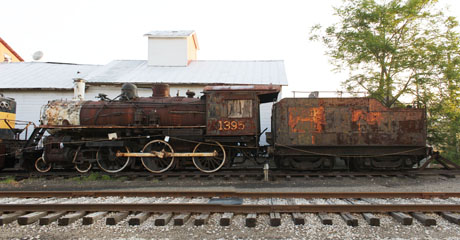
Fifty-six Class H-6-g Ten Wheeler (4-6-0) type locomotives were built by the Montreal Locomotive Works for the Canadian Northern Railway between 1912 and 1913, #1935 in 1913. Originally used for passenger service, they were among the first to operate into Edmonton on the Canadian Northern and became the workhorses that helped open up the Canadian Prairies. Superseded by heavier and faster locomotives on mainline service during the 1920s and 1930s, they continued on mixed and way-freight services until the general retirement of CNR steam in the late 1950s.
With an engine wheelbase of 24’ 10” and driver wheelbase of
14’ 5”, #1395 weighs 173,000 lbs, 133,000 lbs on its 63” drivers.
It has Walschaert valve gear and 20” x 26” cylinders. The grate
is 31.6 sq ft and the firebox 183 sq ft. Total heating surface is 2,332 sq ft, including 403 sq ft superheating. Operating at a boiler pressure of 200 psi, it delivered 28,063 lbs tractive effort. The tender weighs 124,000 lbs light with a capacity of 6,000 gallons of water and 11 tons of coal.
In 1959, #1395 was sold to the Edaville Corporation in
Wakefield, MA. It was later transferred to the ownership of
F. Nelson Blount and became part of the Steamtown Foundation at Bellows Falls, VT. In 1985, it moved with that collection to Steamtown in Scranton, PA. It was later sold to a private individual and is now in the collection of the Coopersville & Marne Railway.

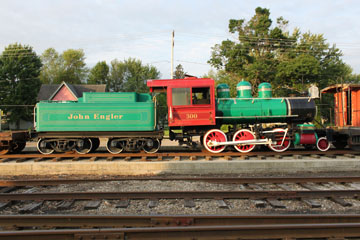
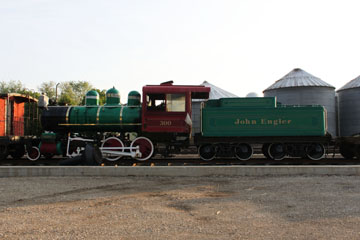
This Mogul type (2-6-0) locomotive was built for “stock” in 1924 to a "standard plan" designed for the Cuban sugar industry by Alco’s Cooke Locomotive Works. As a result of a downturn in the island’s economy in the 1920s, many of these engines remained unsold and were eventually sold to short lines and industrial users in the US.
#300 was to go to the Virginia Central in 1925, but was resold by Alco to the Augusta Railroad in 1926. It weighs 88,000 lbs, 73,000 lbs on its 46” drivers. With 16” x 24” cylinders, it operated at 165 psi delivering 18,500 lbs tractive effort.
The Augusta Railroad connected the town of Augusta, AR, with the St. Louis, Iron Mountain & Southern. Started in 1887 as the Augusta Tramway & Transfer Company, a horsecar line, its major freight was cotton. Later incorporated as the Arkansas Railroad, it was sold and reorganised as the Augusta Railroad in 1918.
The line was abandoned in 1958, with #300 sold to the Children's Iron Mountain Railroad Company for display in Harmon Park in Paragould, AR. It was later sold to the Union Station Industrial Park in Grand Rapids, MI.


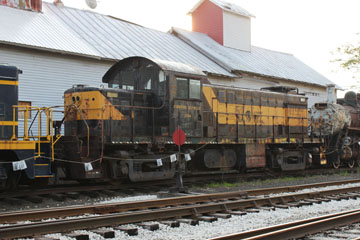
Alco built this RS-1 unit for the Rutland Railroad in 1951 as #402. Leased to the Vermont Railway in 1964, it then went to the Sabine River & Northern as #102. It was rebuilt and chop-nosed at Southern Rails Incorporated. Sold to the Tuscola & Saginaw Bay as #2394 in 1978, it was named "Corkpine Express" the following year.
#2394 is 54' 11" long and weighs 240,000 lbs with an Alco 539T prime mover powering a GE GT-553-C generator driving four GE 731 traction motors. It produced continuous tractive effort of 35,000 lbs at 8 mph with a top speed of 60 mph.

EMD built this NW2 unit for the Chesapeake &
Ohio Railroad in 1949. After retirement, it went into the Muskegon Railroad Historical Society's collection and was then moved to the Coopersville & Marne.
Weighing 248,000 lbs and 44' 5" long, the NW2 has a 12 cylinder EMD 12-567 prime mover powering a GM D15C generator to drive four GM D37 traction motors, one on each axle. It develops 62,500 lbs starting tractive effort at 30% and 31,000 lbs continuous tractive effort at 11 mph, with a top speed of 65 mph.



